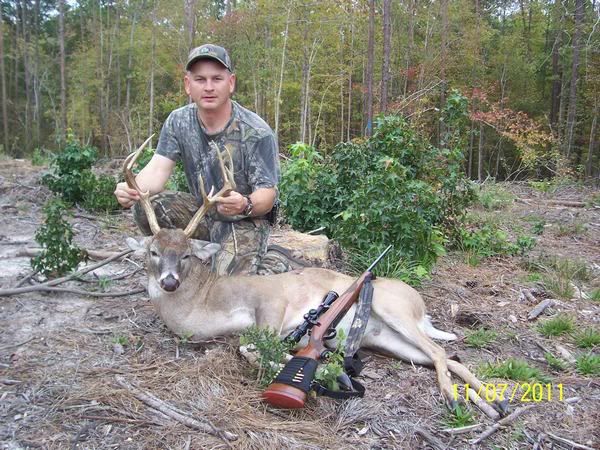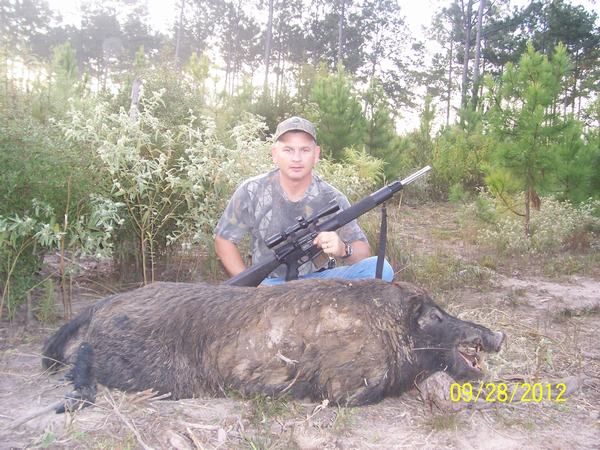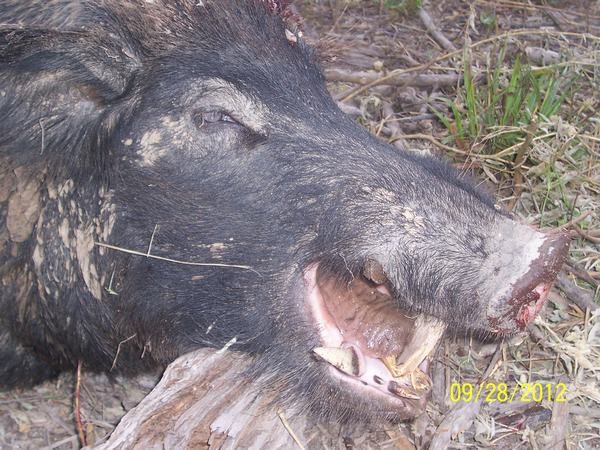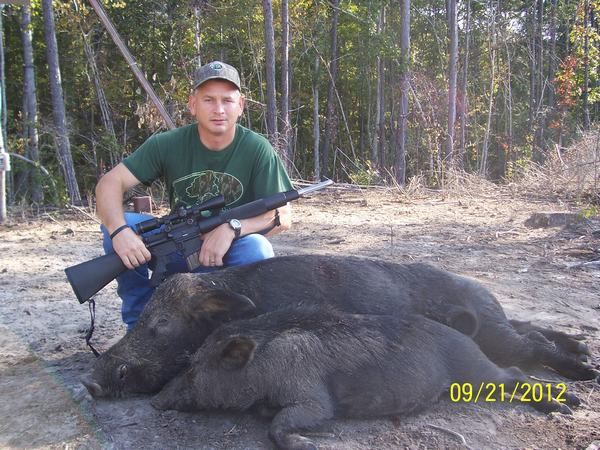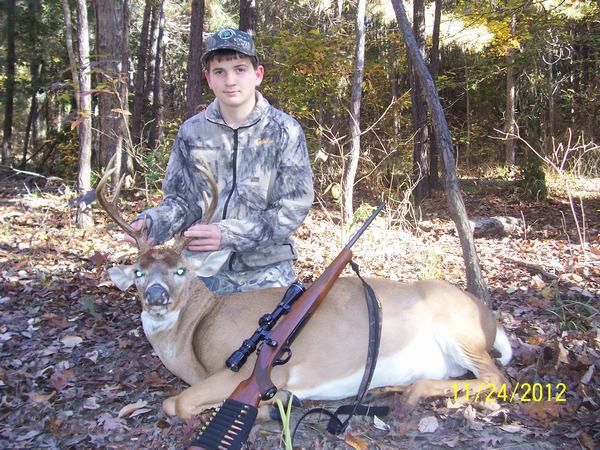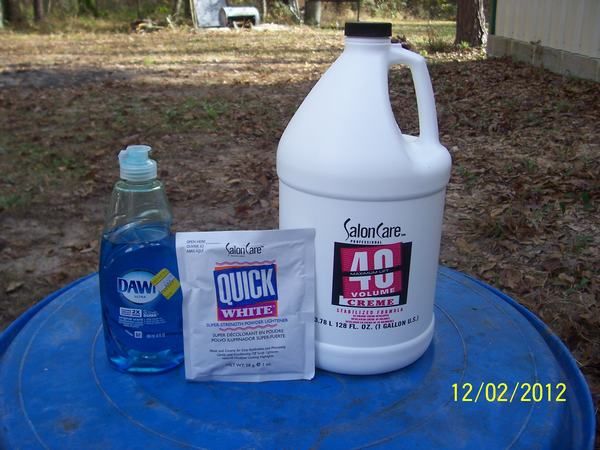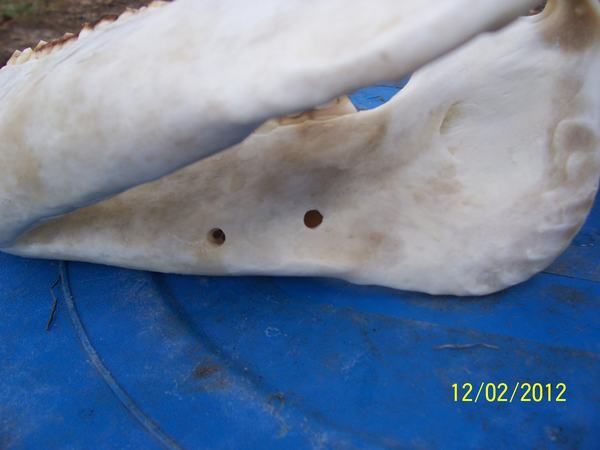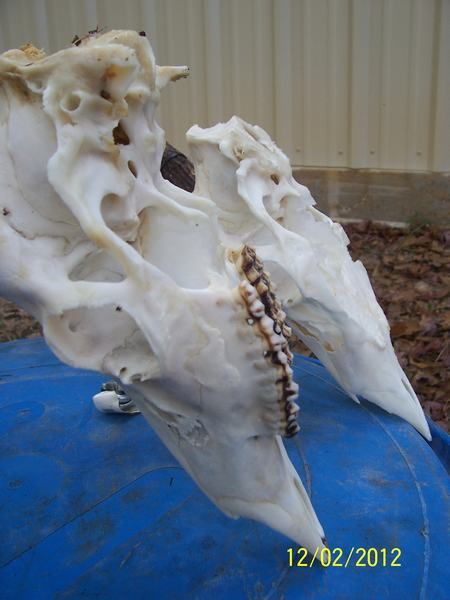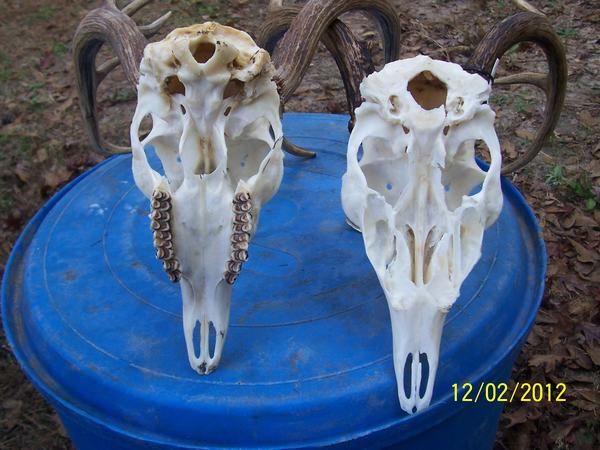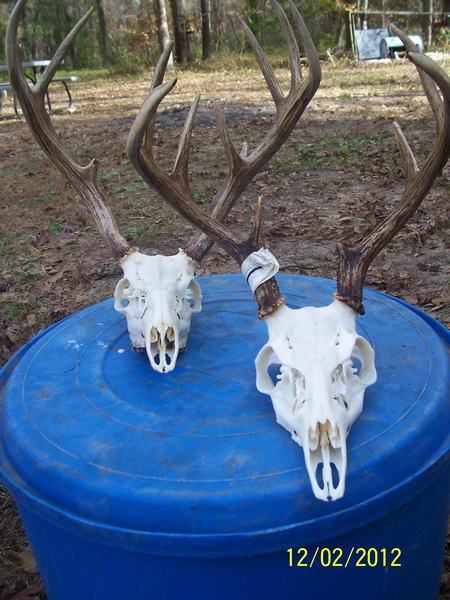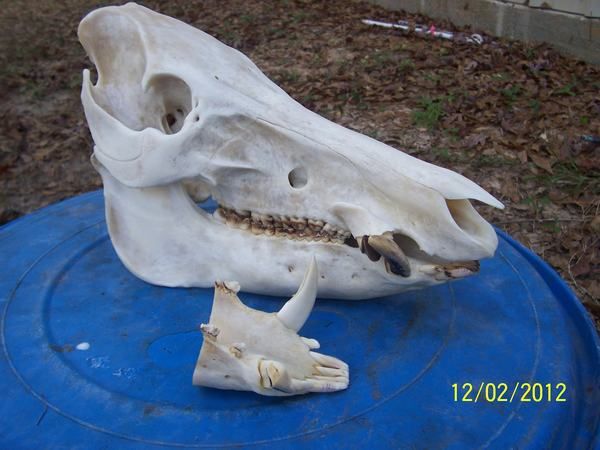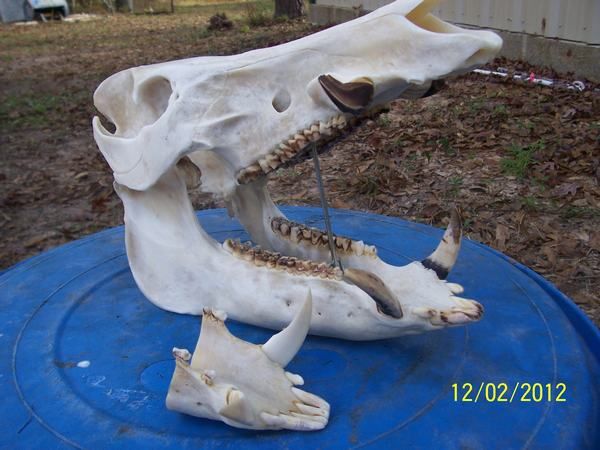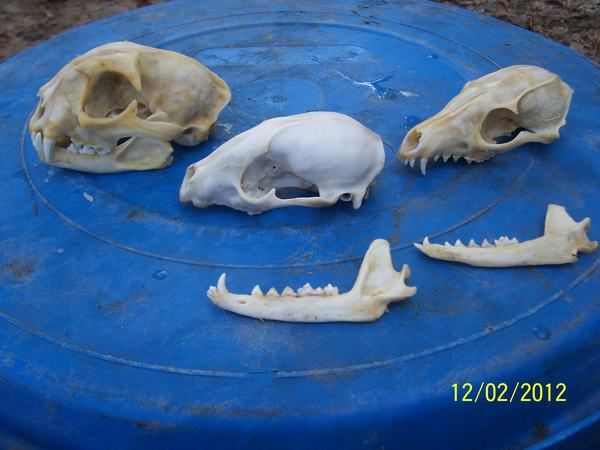I thought about doing this little tutorial AFTER I had already gone through the process, so I do not have pictures of all of the steps, but I will try and fill in some of those later.
The first thing you will need to do with any skull, is completely skin the head and remove as much meat and fat as possible.
There are at least 2 methods to prepare a skull: demestid bettles and boiling (edit: as mentioned below, a hard boil is not the best way, more a slow simmer where the water is just barely bubbling, but I usually just call it "boiling", and when you read that below keep this in mind).
I will be illustrating the latter, and will be the most doable for most people.
After skinning the head and removing as much meat as possible, you are ready to boil it.
I don't recommend doing this in the house, unless you are trying to get rid of the woman in your life. If you are, then by all means.
I use a fish fryer and was tub from the local hardware story.
Fill the tub with water before you light the burner or you will burn a hole in the thin tub or at least blacken the bottom. If you are going to be doing a deer, elk or something like that, I suggest using a string or something to keep the antlers themselves up out of the water as you don't want to take away the natural coloration of the antlers.
You will also need a few supplies for the boiling and for whitening the skulls after boiling.
Putting Dawn dish soap into the boiling water will help degrease the skulls during boiling. If doing bears or especially hogs I recommend drilling some small holes in the inside of the jaw before putting them into boil.
The other two ingredients you see above are 40 percent hydrogene peroxide CREME rinse, (the creme is much thicker and coats the skulls better) and a product called Quick White which is a power. Both are available at your local beauty supply store. Anything over 40% is only available to licensed beauticians. I will talk about these more when we get to the whitening process.
Below you can see where I drilled the holes to allow the fat to boil out of the jawbone.
The inside of the jaw contains a lot of fat that will stain the skull and will continue to leech out of the bone over time.
There is also a couple of ways to do your deer skulls. One is to take a saws all and cut the bottom of the skull off flat. This will make it easier to clean out the brain and sinus, and will also allow the skull to lay flat on a plaque. The other is to just leave the skull intact with all of the upper jaw teeth.
I will usually boil the skulls for about 4 hours, less for small skulls like coyotes, fox or bobcats. For small skulls, I will usually also use a smaller pot, but remember if you do, to be sure and check the water often. I learned this the hard way once and went off and left the pot burning and after forgetting about it several hours later I found I had cremated my skulls except for the set of antlers which were saved because they were being suspended by the string. In a small pot the water will evaporate faster than you think.
Remember after the boiling (simmering) is over to carefully pour off the water because you do not want to loose any teeth that have fallen out of the skull. If I am doing small skulls with small teeth, I will only do a couple at a time so that I can keep up with the teeth. Also be carefull with the nose portion of deer as they are fragile, especially when you are trying to remove the cartilage in the nasal cavity.
In the case of large skulls like hogs or elk it is best to boil (think simmer) the skull for a few hours and then remove as much of the meat and membranes as possible. Then soak the skulls in a bucket or barrel of clean tap water for 2-4 weeks to allow the rest to rot off. This really helps get the sinus junk to turn loose. After the soak, boil or simmer the skulls again for a couple of hours.
When you get to the this point, it really helps to have a good knife, a small wire brush, and a air compressor spray attachement to blow out the sinus cavities and little crevices. A little air powered wire brush works good too.
Especially on hogs, you need to pull the cutters and whetters as they will have a good bit of meat inside the teeth. The cutters usually have as much tooth inside the jaw as there is sticking out of the jaw. You will often see where a taxidermist has "pulled" the cutters to make them appear much longer than they actually were. This can usually be determined by noting the gum line on the teeth.
Once you have the skulls as clean as you can get them, you are ready for the whitening. I poured up about as much 40% creme as I thought it would take to cover my skulls into a plastic cofee can and then added about a table spoon of the quick white. I made the mistake of not putting on some latex surgical gloves before handling, and the quick white rapidly begn to burn MY skin. Once I had the quick white stirred up in the creme rinse, I painted it onto the skulls with a small paint brush taking care not to get it on the antlers or the teeth of the deer or hogs as I wanted to keep the natural "black" on the teeth.
The smaller skulls and jawbones, I just dipped into the can and then let the excess drip off. Then I wrapped the skulls in plastic grocery bags. Plastic wrap will also work well. I then let them sit overnight. The plastic keeps the peroxide from evaporating and working on whiting the skulls.
After they have set, you are then ready to wash off the skulls and gently scrub them with a plastic bristle brush to get the last remaining tissue off.
I have found that the longer you wait between the boiling and the whitening, the harder it will be to get them clean. In the following pictures you will see a bobcat and fox skull that I actually boiled back in the spring, but didn't try to whiten until this weekend. My buck from last year was boiled last November and not whitened until this weekend. The big hog was taken out of the freezer a couple of weeks ago and boiled and then had been soaking in a barrel of water the last two weeks.
Hunter's buck was killed last Saturday, boiled a few days ago (along with the boar skull that had been soaking in the barrel) and they were all whitened at the same time.
You will see that Hunter's buck turned out whiter than the buck that I boiled last year but didn't whiten until now. You will also see that the big hog turned out great, while the predator skulls didn't turn out as white.
The smaller hog skull that you see was boiled several years ago, and no effort was ever made to whiten it until now. I also didn't drill holes in the jawbone, so you will notice how the fat has leeched out and yellowed the skull, and the whitening process didn't do nearly as well on it.
